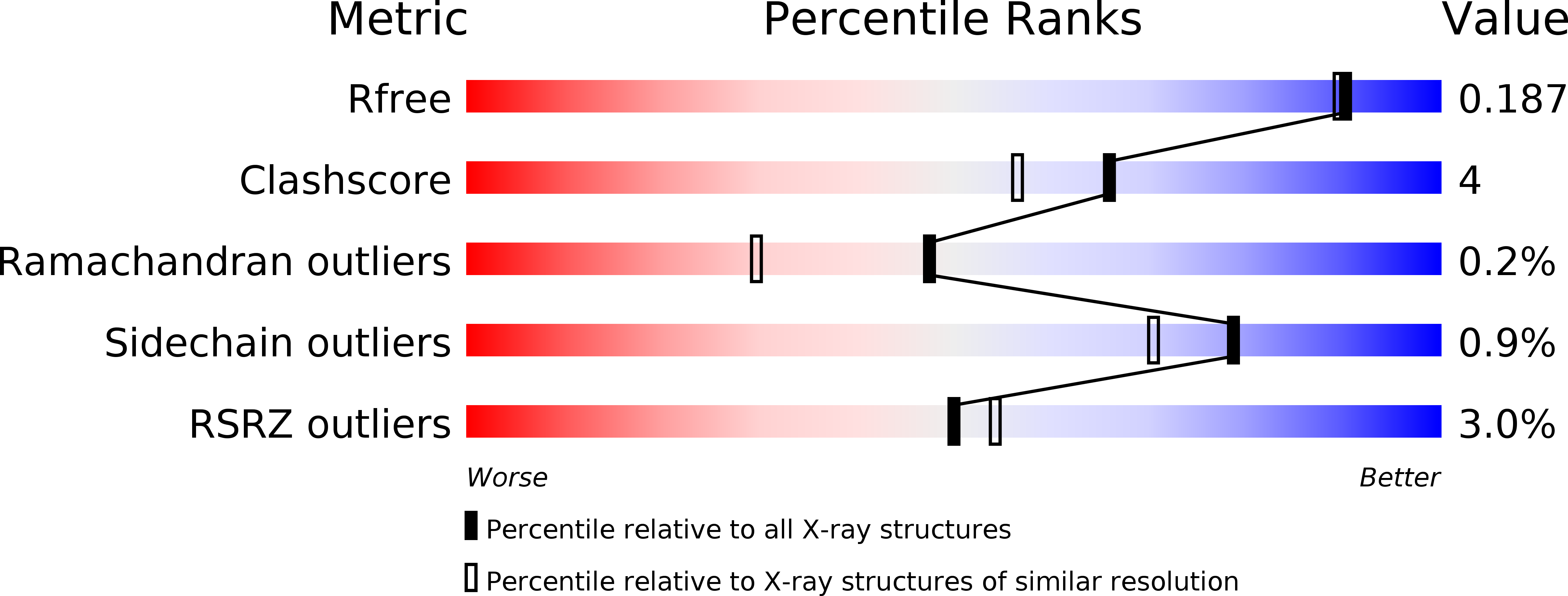
Deposition Date
2007-01-16
Release Date
2007-02-06
Last Version Date
2024-05-08
Entry Detail
PDB ID:
2JE8
Keywords:
Title:
Structure of a beta-mannosidase from Bacteroides thetaiotaomicron
Biological Source:
Source Organism:
BACTEROIDES THETAIOTAOMICRON (Taxon ID: 226186)
Host Organism:
Method Details:
Experimental Method:
Resolution:
1.70 Å
R-Value Free:
0.18
R-Value Work:
0.15
R-Value Observed:
0.15
Space Group:
P 1 21 1


